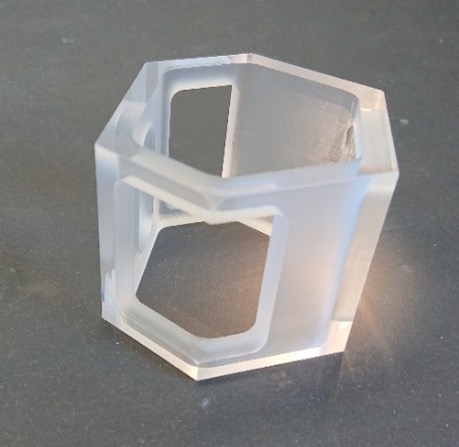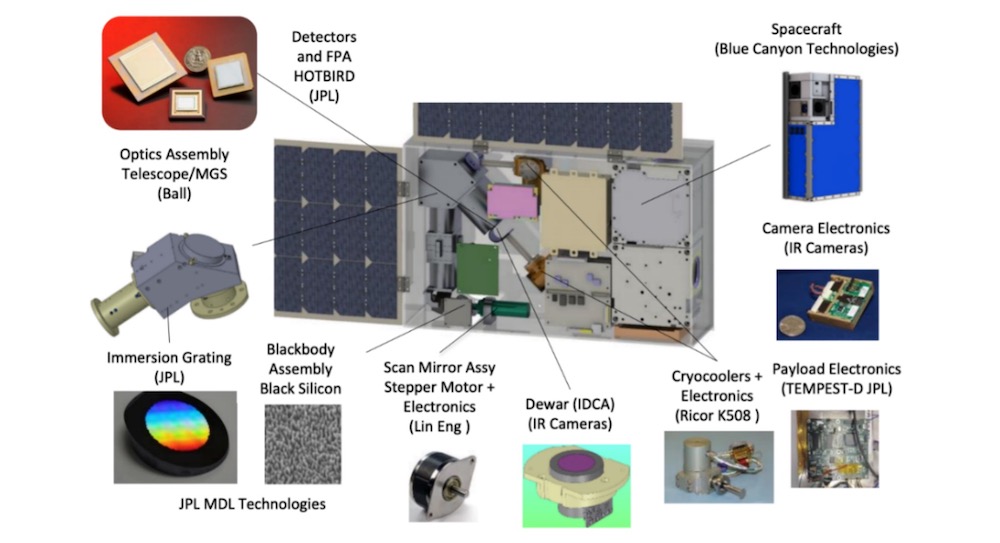Patents
Below is an overview of notable patents that were issued by the United States Patent and Trademark Office (USPTO) in fiscal year 2022, including a concise description of what is novel about the invention, what useful applications might be, and how it might be adopted commercially.
The technologies listed below may be available for licensing by industry. If interested, please email ott@jpl.nasa.gov.
Recently Issued Patents
Model Based Methodology for Translating High-Level Cyber Threat Descriptions into System-Specific Actionable Defense Tactics
-
US Patent Number: 11,425,157
-
Inventors: Kymie Tan, Jeremy L Pecharich, Arun A Viswanathan, Deniz E Celik, Bryan Johnson, Brian Wright, Marc I Pomerantz
A novel automated approach for performing cyber risk assessments of complex environments was developed. This approach is useful for securing the ground system of a space mission, but there are also significant applications in more general areas.
The software is called the Cyber Analysis and Visualization Environment (CAVE), which uses a deductive reasoner, and also provides a declarative logic programming interface. This allows a decision maker, e.g., a system administrator, designer, or engineer, to interact with a model of a complex system, and pose relevant queries to reason about certain risks, such as:
- network relationships,
- network connectivity through firewalls,
- how applications access files on a system,
- how users access files on a system, and how they interact with access control policies,
- how an adversary can gain privilege by exploiting known vulnerabilities,
- how an adversary can exploit a network vulnerability to gain access to a critical application.
With public awareness increasing due to significant cybersecurity, there is a strong market need for improved cybersecurity tools and technologies.
Also, cyber protection is a priority for JPL, and this technology may be of benefit in assessing the risks posed by the cyber threats to space missions. Understanding overall cyber risk requires gathering detailed information, such as hosts, routers, applications, network connectivity, firewall policies, access control policies, software packages, and vulnerabilities, and then analyzing this information to understand the system vulnerabilities and overall system exposure. This is a challenging task in the dynamic and complex environment of networked and open systems.

High level diagram of data flows in the CAVE system. (credit: NASA/JPL)
Monolithic Assembly of Reflective Spatial Heterodyne Spectrometer
-
US Patent Number: 7,032,395
-
Inventor: Seyedeh Sona Hosseini
A new Reflective Spatial Heterodyne Spectrometer (RSHS) instrument enables high etendue (a measurement of sensor throughput), together with high spectral resolving power, termed R, in an ultra-compact and cost-effective design. The new RSHS design has significantly lower mass and does not use a telescope (or one with a small aperture). It is well suited for far-UV to near-IR wavelengths, which is ideal for science, remote sensing, and medical applications.
Traditional interferometers are based on path-length differences that require beam splitters, refractive optics, and scanning mirrors in a non-common path layout. State of the art imaging spectrometers are large, have a small angular field-of-view (FOV), and require a large aperture telescope to achieve high R.
One of the challenges of using high R sensors in space is maintaining alignment due to tight tolerances of the optics. This patent discloses a monolithic assembly of the RSHS design that provides a way to fabricate robust RSHS interferometers from one piece of glass, which intrinsically maintains alignment.
This patent discloses the design and also certain applications of the miniaturized monolithic RSHS instrument. This design can be scaled without major technical changes for more flexibility, while keeping the instrument compact and cost-effective.

(credit: NASA/JPL)
CubeSat Infrared Atmospheric Sounder (CIRAS)
-
US Patent Number: 11,378,453
-
Inventor: Thomas S Pagano
CIRAS is a compact instrument to provide atmospheric sounding in a CubeSat and offers comparable or better performance than current atmospheric sounders at a fraction of the cost. Sounders are instruments that provide vertical profiles of temperature, pressure, water vapor and critical trace gases in Earth's atmosphere.
CIRAS can greatly reduce instrument, satellite, and launch costs compared to the state of the art. This can enable expansion of orbital remote sensing constellations to improve temporal revisits and provides a lower cost alternative to a geostationary infrared sounder. This is a critical need for next generation weather forecasts.
CIRAS employs a wide field telescope and large format focal plane that can scan slowly, enabling more time for signal integration. The size of the collecting aperture of the telescope is also reduced, and hence reducing the size of the overall system.
The detector array uses the JPL developed High Operating Temperature (HOT) Barrier Infrared Detectors (BIRD). HOT-BIRD photosensitive material is mounted on a Readout Integrated Circuit (ROIC), and the ROIC is cooled to 130 degrees Kelvin. JPL also developed the system electronics to interface with the scanner, camera, cryocoolers, blackbody and spacecraft electronics. CIRAS fits in a standard commercial 6U bus with solar panels and batteries.
Commercialization of weather data is a growing business as companies plan to sell their data to weather agencies. Substantial savings can be passed on to the government procurement agency providing data at a significantly lower cost than the current systems. A constellation of CIRAS instruments in low Earth orbit would meet the requirements of a geosynchronous orbital system and provide worldwide coverage in a significantly less costly system.

(credit: NASA/JPL)
Simultaneous Representation of Moving and Static Obstacles for Automatically Controlled Vehicles
-
US Patent Number: 11,217,107
-
Inventor: Anthony T. Fragoso
This patent discloses a method for automatically controlling robotic aircraft such as drones, watercraft, or ground vehicles to avoid collisions. This new method can avoid collisions in environments containing both static and moving objects simultaneously.
The invention relies on a new method for representing potential paths called an “egospace,” which is short for an ego-centric (as in self-centered) motion planning map. Using this representation, appropriate paths can be determined to avoid collisions extremely quickly compared to the state-of-the-art which depend on slower data processing methods.
As a simple example, if an object is increasing in size in the egospace (relative to the viewer and with decreasing range), and it is not changing angle (constant bearing), then a future collision may be likely.
This patent introduces the ability to consider other moving objects, the ability to make plans to avoid collisions, and then execute the planned avoidance maneuver.
Realtime collision avoidance technology such as this has broad applications in areas of autonomous navigation, obstacle avoidance, and motion path planning. This invention was developed jointly with the Graduate Aerospace Laboratory of the California Institute of Technology (GALCIT), under the direction of Caltech professor Soon-Jo Chung.


(credit: NASA/JPL and Caltech)